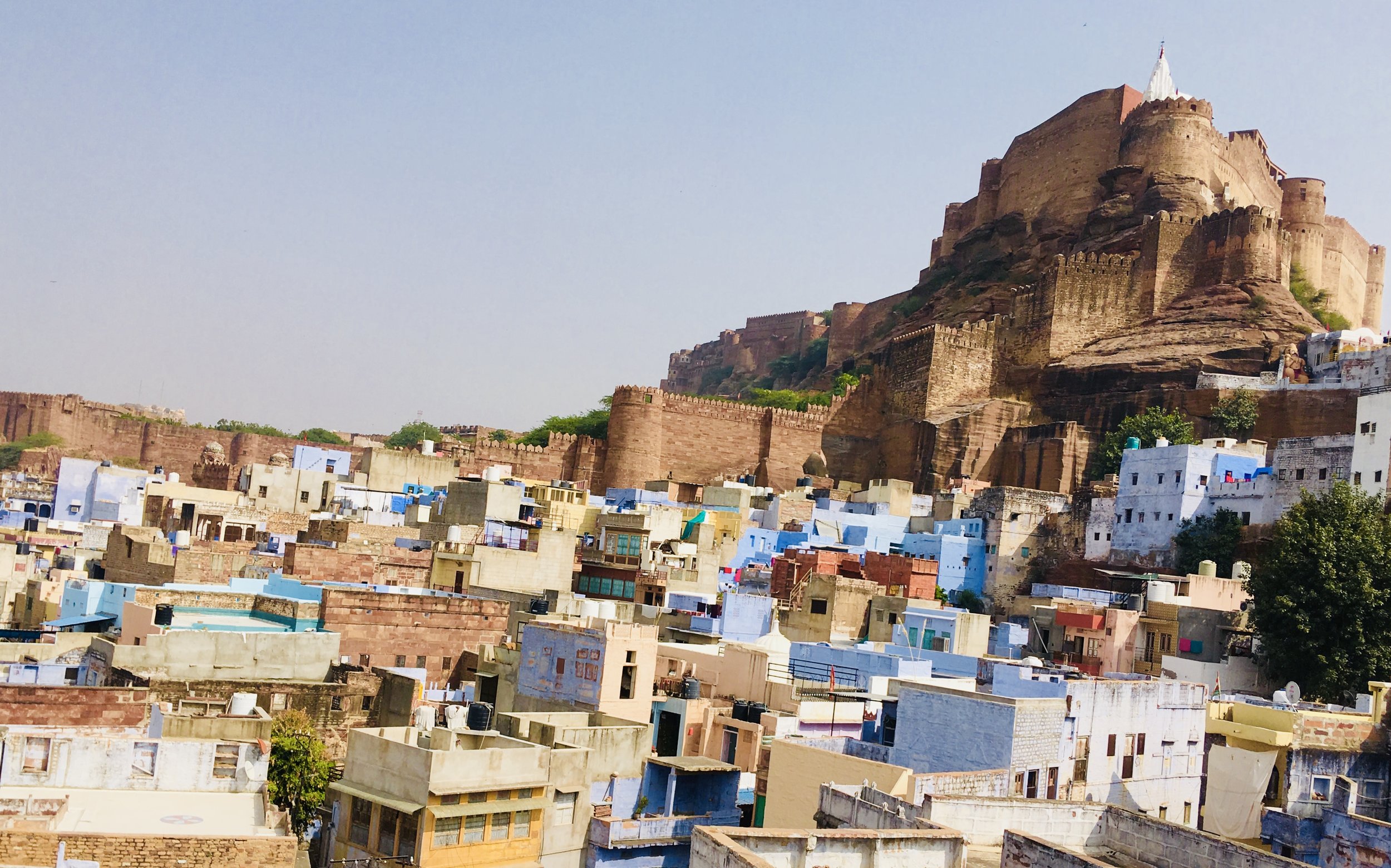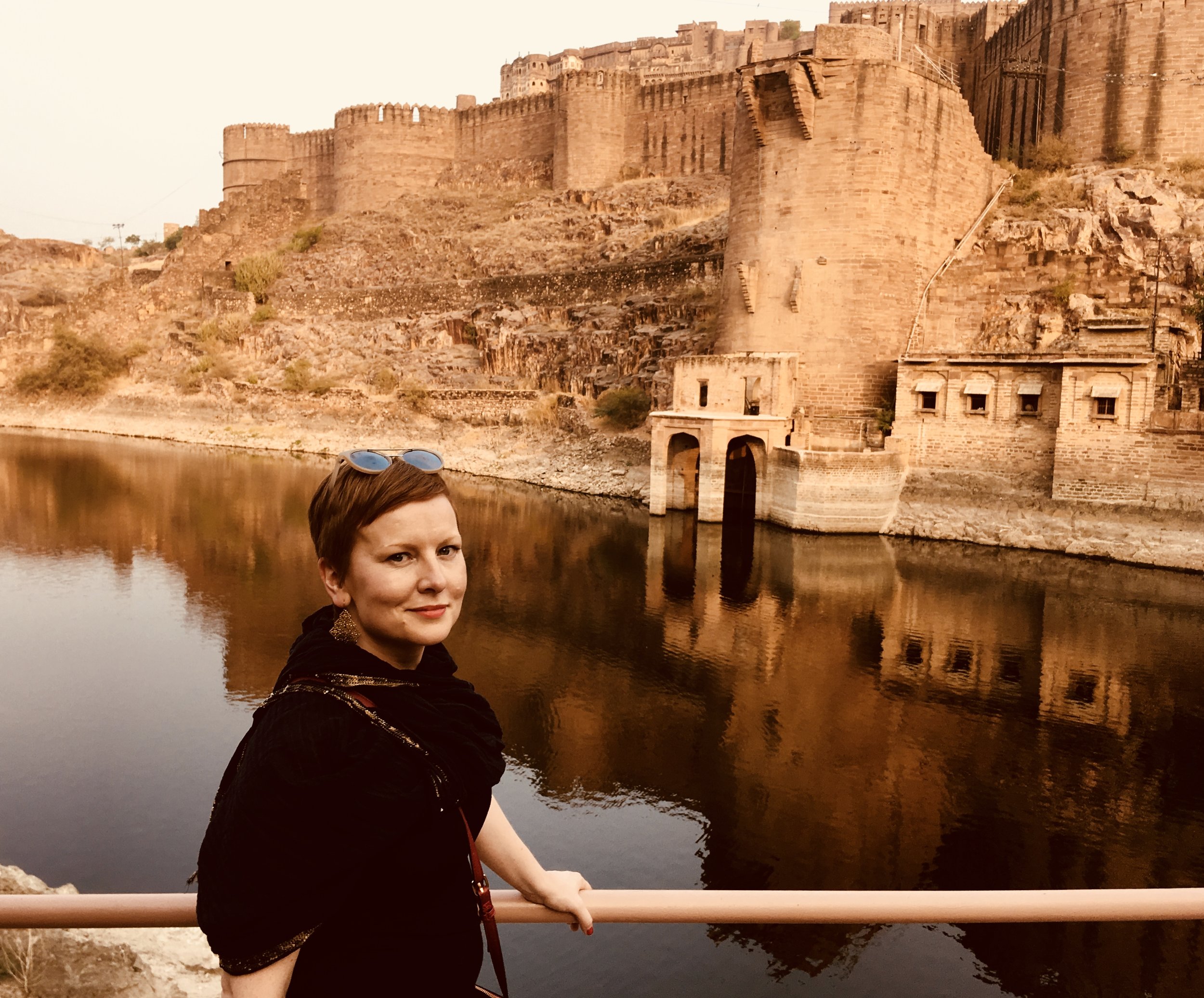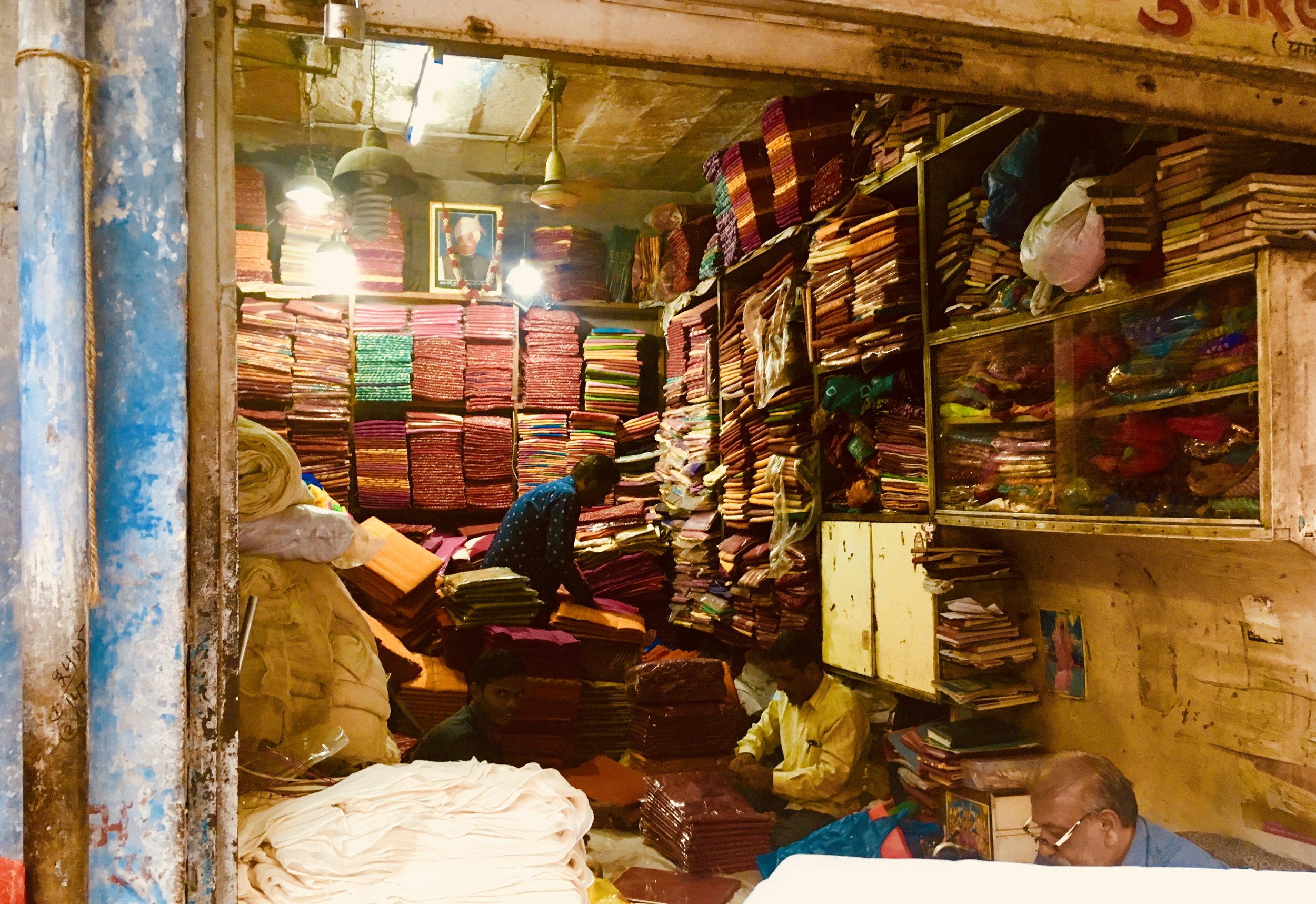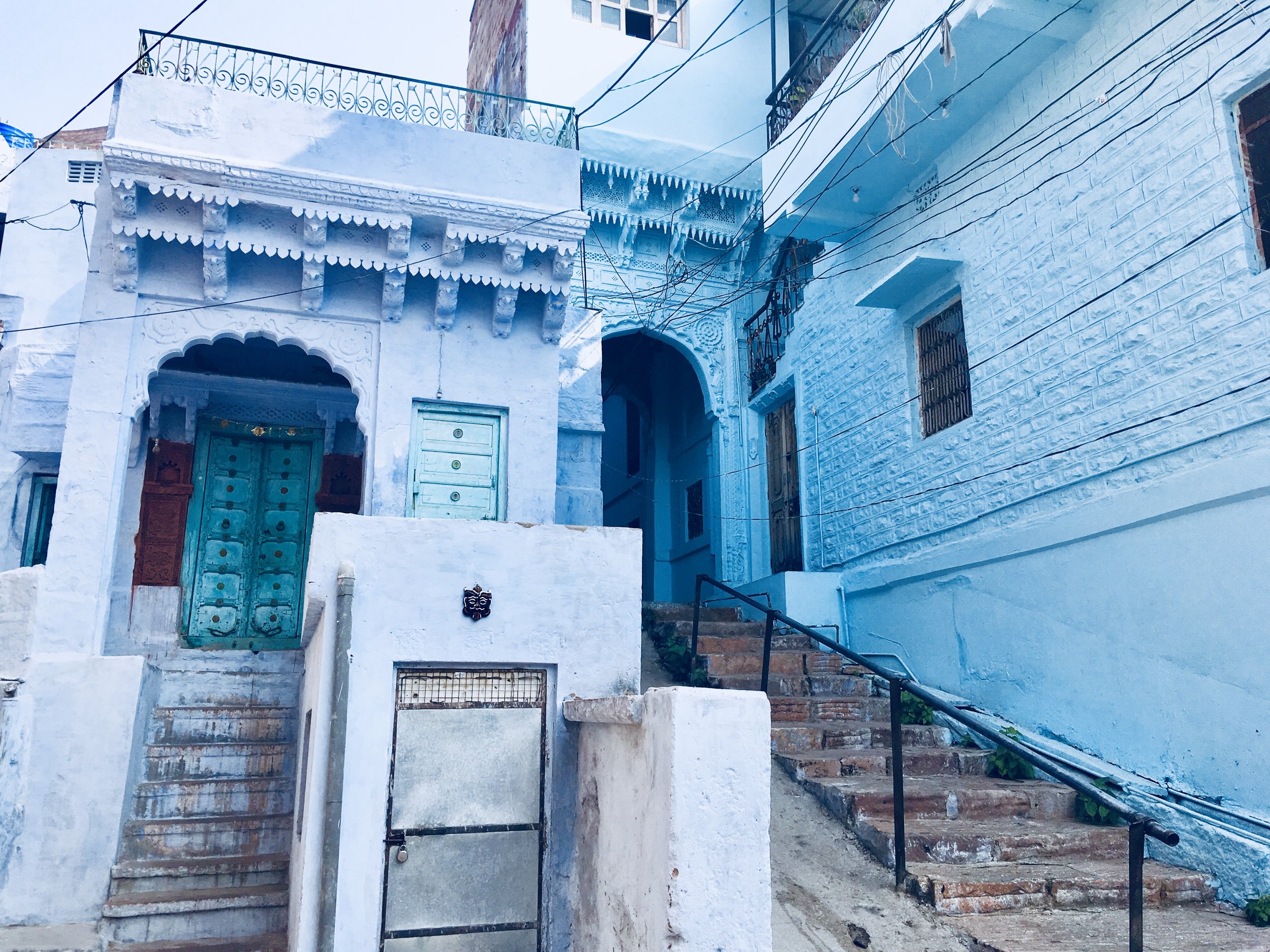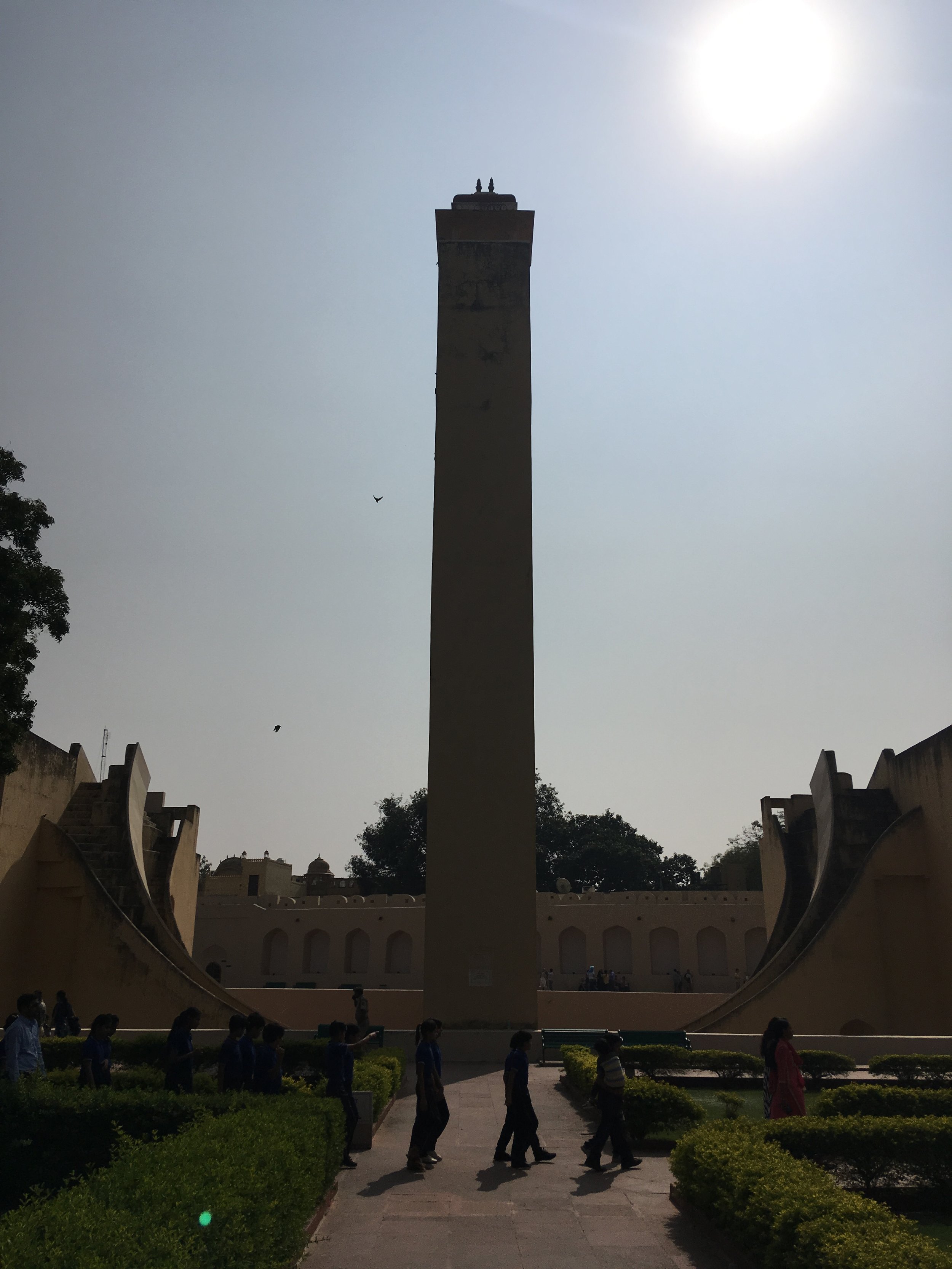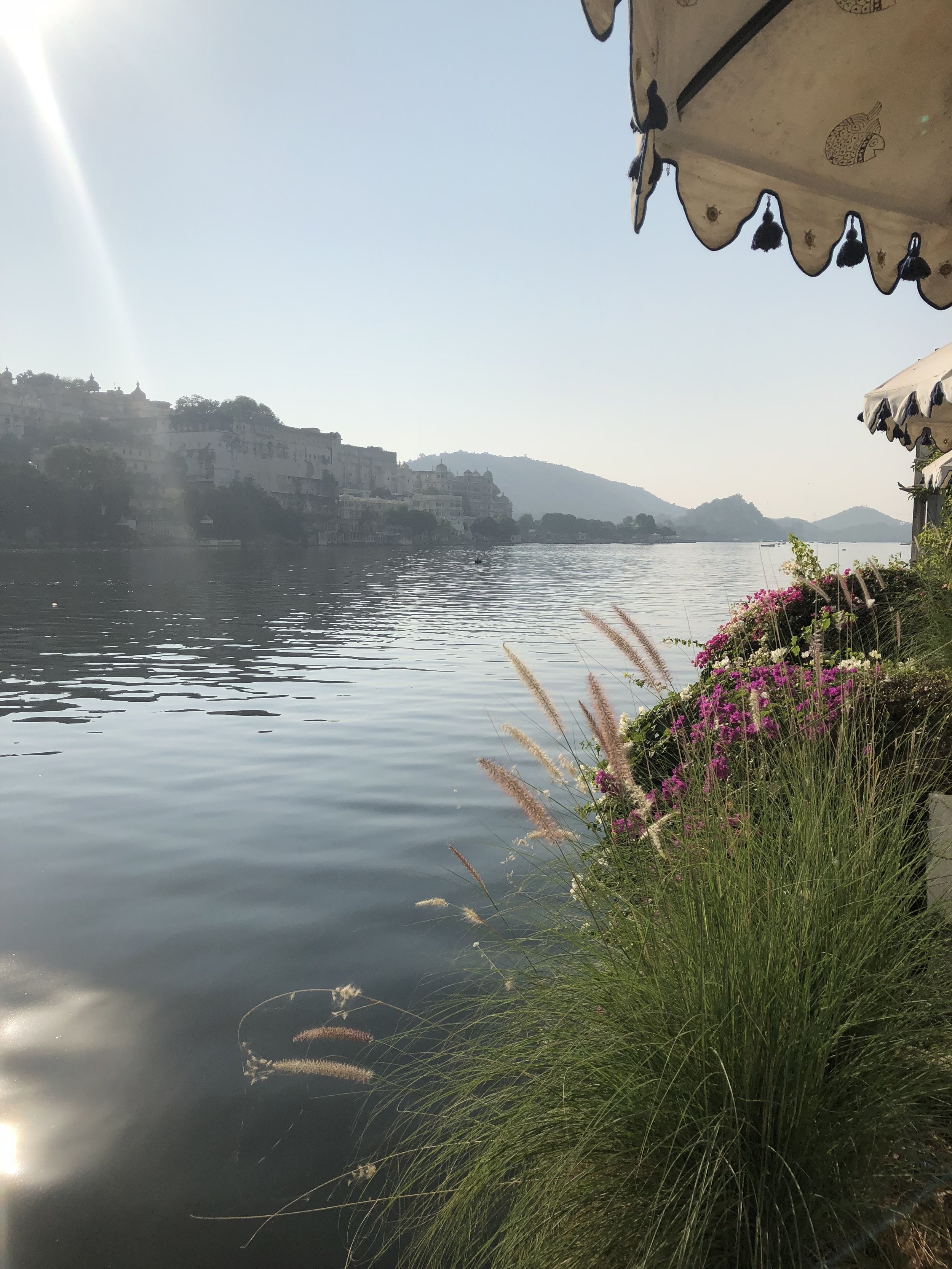Day 25-27: Amritsar
"To all intents and purposes, my Auntie Winnie's house"
We arrive at Mrs Bhandari’s guest house late. Of course we did – we’d taken the train ; -) But even though it was 10pm the chef had stayed on to make us vegetable soup and toast. This ‘taste of home’ was just one of many which engulfed us in this frankly delightful gated (it was in a old military cantonment) guest house. Floral embroidered bed spreads, net curtains, original Victorian era floor tiles that sell for a fortune in Fired Earth now and more hot water bottles (even though the temperature had dramatically warmed up as far as we were concerned post Shimla). It was to all intents and purposes my Auntie Winnie’s house - just without an outside toilet (hers) and with buffaloes in the garden (Mrs Bhandari)…
As well as everything we’ve seen and the folks we’ve met so far, this was a person we didn’t get to meet whose story we loved a great deal. And she deserves some recognition in this little diary. Mrs Bhandari lived until she she was 101 and her guesthouse which we spent a few days in felt like it was paused in time, Victorian time to be precise.
She was a teenager during the Amritsar riots of 1919 and her wonderfully warm obituary suggests she was the first Indian woman to run and own her car and one of the first to study for a Masters in the Punjab.
Mrs Bhandari’s formidable, fearless approach to life and love never ceased and when both her husbands died prematurely she was forced to take family matters into her own hands and turned their palatial villa into a guesthouse to ensure a better life for her four children.
The tribute to her which hangs in the gardens of the Homestay ends with ‘she is deeply missed by her loving family, her devoted friends and the thousands from around the world who enjoyed her hospitality over more than 50 years at the guesthouse which will continue to bear her name.’
Mrs. Bhandari
Amritsar had two draws for us – the Golden Temple – not least because of the admiration we’d developed on our travels so far for the Sikhs we’d met - and the Wagah Border Ceremony, excitement which had been building for years since seeing Michael Palin come to spectate in one of his his televised journeys around the world.
The golden temple was an serene a place as we’ve encountered. Having been guided on the religious customs to observe during our previous Gudwara visit we were prepared for the feet washing, hair covering and clockwise journeying around the temple complex. We must have completed a half dozen circuits without thinking round and round the central lake, the golden temple itself seemingly floating in the centre. All adding to the unerring peacefulness of the place.
During our laps we were stopped much to our delight by a group of 4 elderly Sikh men with hugely impressive grey beards who wanted a photo with us. A photo we of course would have jumped at the chance of having but would have been to scared of offending to ask for. We also paused to read the thousands of names etched beautifully, black on white marble, commemorating those men from Sikh regiments lost to various wars over the last centuries.
For two hours the symmetry only added to our untroubled enjoyment of the site, that was until we tried to remember which corner we’d dropped our shoes at... then unchallenging uniformity became our enemy : -)
We saw both of those things and had our excitement rewarded and then some but it was our visit to two things not on our to see list which affected us the most.
Amritsar is also the site of the Jallianwala Bagh massacre – one of the most despicable acts by the British and in Churchill's words “a monstrous event“. Now it’s a park with tributes to the dead throughout and walls pitted with bullet holes – where men, women and children were penned in and shot. The museum there also had articles about the other atrocities inflicted on Indian people during this period such as every citizen of Amritsar having to crawl on all fours (actually their stomachs) down a street after an English woman was pulled from her bike there. History says that post this all Indians were united against the British for the first time, solidifying national support for independence.
So with emotions running high already we then set off for the museum dedicated to Partition at Amritsar’s Town Hall. The recent 70th anniversary has obviously brought a number of accounts and very personal stories of the impact this catastrophic cartography had on so many millions and because of the wide reporting of it I’d wager most British people my age know more than they ever have about it. The museum which opened on the day of the anniversary is the central repository of stories (shown on TV screens and as oral recordings, first hand accounts often), newspaper articles and other source materials relating to the aftermath of division. The trauma of it was palpable at times not least in one room with a well at its centre. Women and children all across Punjab threw themselves down wells like this to avoid being raped and abducted by rioters, with some having only injured themselves from hitting other bodies below them, then climbing out to try again.
Wagah was inevitably quite the juxtaposition and as crackers and overblown as we’d hoped. I’ll leave it to Jacko to regale you with tales of our border adventure – including I hope him being turned away...
But we leave Amritsar genuinely more enriched by learning more about this country’s past (and present) and happily rested thanks to Mrs Bhandari (in spirit at least).
In that we got on the wrong one… it’s possible we might be a bit blasé by train number 12 ….
It went something like this. Got on train, celebrated the fact we seemed to have a berth to ourselves, unpacked, set up for our trip picnic (tripnic??), filled out our form saying what good service we’d experienced – only to have a rather perturbed looking inspector tell us we were on the wrong train. Cue concerned faces and the prospect of being stranded at the next train station overnight when we should have been at the Taj Mahal.
Turns out Beas, the stop we were heading for next was also a stop for our actual train and we could get off and wait patiently and thankfully for it to arrive. The inspector came and got us when we were pulling in to Beas, took us to the right platform and wished us well. Fast forward to our next ticket inspection on #therealtrain and it turns out our previous inspector was a mate of his and had phoned ahead to let them him know to expect us. “The British couple who had caught the wrong train”. Incredible India as the slogan says.
And whilst I’m here … on the other side of the train tracks…
We love getting trains, generally, and so far in India. But undoubtedly the worst things about getting trains here is standing around on the platforms beforehand.
I understand curiosity and the potential interest in seeing new faces but the ‘held far too long from a metre away from you’ staring is getting very tedious. Sometimes when meeting said stare there will be apologetic side or downward glances but more often than not men, and I’m very much talking about men here, will just keep on looking which I don’t think is just a bit of forgivable cultural relativity I should come to terms with. Not least after I’ve had a few conversations with older Indian men now who think this type of behaviour is well past it’s sell by date and just an excuse for a leer which they’re fairly confident they won’t be called on.
"Another day of contrasting emotions"
"CAN YOU FEEL! THE ELECTRIFYING ENERGY! OF INDIA!" howls the hysterically grinning man as he enthusiastically pumps my hand with both of his. I certainly can. We're at the Wagah border ceremony watching the cream of the Indian army beat the retreat as the border is closed for the day and the flags lowered. It's quite an event. Thousands of cheering Indians are gathered to watch in the purpose-built grandstands by the gates, the tannoy blasts martial music and the hyperactive MCs get the crowds whipped up into a patriotic fervour. This is repeated twenty feet from where we're sitting on the Pakistan side and the two crowds compete to out-shout each other. It's deafening.
The ceremony itself is comically overblown. The honour guards of both armies are resplendent in dress uniforms, boots shined, wearing sashes and braid and with fan-like headdresses sprouting from turbans. The Indians wear khaki and white, the Pakistanis black and red. Both forces clearly pick their burliest and hairiest troopers for this confrontational ceremony and a lot of time is spent glaring at each other across the border, chests puffed out and beards bristling.
So that neither side loses face, the ceremony itself is choreographed with perfect symmetry. Both sets of soldiers take the same number of paces to the gates, bugles ring out in time and the flags are lowered at the same speed so that they cross each other precisely in the middle of the gates. Confined by these restrictions, the guards try to outdo each other by the aggression of their marching which leads to the absurd sight of a dozen macho warriors high-kicking like a chorus line, their ankles at head height, and smacking their boots back down into the flagstones with a crash that would make a chiropodist wince. All the while their opponents over the border mirror them exactly. More glaring, eyeballs like organ stops and veins popping in neck and temples, a stagey readjustment of rifles and kit and they're off again, almost throwing themselves off their feet with the force of their marching. Somewhere in the middle of all this, the border is closed. A blink-and-you'll-miss-it handshake between opposing officers and the gates crash shut. It's compelling theatre.
Somewhere behind all this display, something serious is happening. India is increasingly confident and proud of itself. Independence is a very recent memory and the country is keen to present itself as strong, bold and not to be underestimated. "Don't mess with us." Wherever we've been, across the North of the country at least, it's impossible to ignore how militarised it is. The army presence is huge and inescapable and the police are so paramilitary as to be indistinguishable from the soldiers. Nationalism and patriotism are on the rise and the flag can be seen everywhere. Lurid recruitment posters scream from billboards; "Honour! Valour! Sacrifice!" and "May God Have Mercy On Our Enemies For We Will Not!" Tanks and field artillery pieces take the places of statues outside municipal buildings and on roundabouts. It's hard to square this belligerent, cocksure tone with our interactions with ordinary Indians whose patriotism presents as simply wanting us to be comfortable and leave with a good impression.
That said, underneath the posturing and bombast, the border ceremony couldn't happen without good-natured cooperation between the two countries. The last official Indo-Pak war was only eighteen years ago and the conflict in Jammu and Kashmir simmers on. Memorials to the dead are much in evidence but craning our necks behind the scenes at the border ceremony, we could note squaddies at ease from both sides, chatting through the fence like work colleagues.
It's hard to say what's just for show and, even if it is for show, what the impact of that is - certainly the people who came to watch were taking it seriously.
Our trip to Wagah capped a day of contrasting emotions. It began at dawn at the Golden Temple. Helen has touched on that so I won't repeat her save to say that, as in the gurudwara in Delhi, we're made very welcome and spend time sitting and soaking up the peaceful, pious vibe. Hard to believe that Indira Ghandi attacked the place with tanks only thirty years ago. Perhaps no wonder many Punjabi Sikhs consider themselves a race or nation in their own right.
Perhaps unnecessary to say that the Temple is entirely beautiful and unsurprisingly, very gold.
More strong feelings surface right next door to the temple at Jallianwala Bagh, the site of and memorial to the 1919 British massacre of an unknown number of unarmed pilgrims, likely more than two thousand. It's hard to feel quite as comfortable here as a British person, though there's no animosity at all from the Indian visitors who, like everywhere, are keen to chat to us. The closest we come us when a teacher, there with his sons, pointedly asks if we know what happened here and if we understand it was a crime. I answer honestly and that satisfies him, we chat and they take selfies with us before wishing us well.
From there to the Partition Museum. A heartbreaking and detailed record of the horrors of 1947 and the founding of three new nations. Almost 15 million people were displaced and dispossessed with violence, hunger and disease taking between one and two million lives. The museum is more concerned with telling the stories than laying blame but doesn't shy away from apportioning responsibility to the British, Jinnah, Nehru, even Ghandi, and anyone who raised their hand against their brothers. It's deeply affecting.
Even staying at Mrs. Bandhari's wonderful guesthouse, I'd struggle to say that Amritsar is the place I've enjoyed the most on our journey so far - enjoyed would be the wrong word. It's the place I've felt the most, and somewhere I'll remember for a long time.
Mrs. Bhandari's kitchen, comfortably familiar..






































































